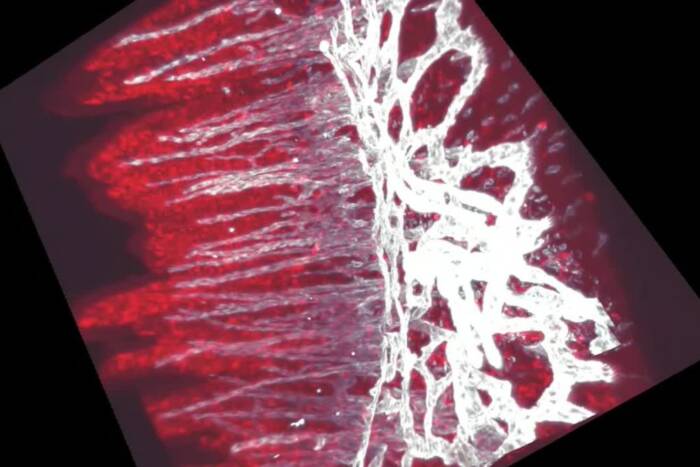Luciano Marraffini works to understand how bacteria acquire foreign DNA
by ZACH VEILLEUX
 Luciano Marraffini, a microbiologist, is interested in how bacterial pathogens modulate the transfer of foreign DNA into their genomes. He joined the university on July 1 as assistant professor and head of the Laboratory of Bacteriology.
Luciano Marraffini, a microbiologist, is interested in how bacterial pathogens modulate the transfer of foreign DNA into their genomes. He joined the university on July 1 as assistant professor and head of the Laboratory of Bacteriology.
Fundamentally, Dr. Marraffini wants to understand how bacteria such as Staphylococcus aureus, the pathogen responsible for hospital-based staph infections, evolve, including how they gain the ability to resist antibiotic drugs. But unlike higher organisms which evolve by accumulating mutations in their genes, bacteria do so by incorporating short sequences of DNA from other bacteria or from the environment into their genomes. This process, called horizontal gene transfer, allows bacteria to quickly adopt successful adaptations, but also carries the risk of introducing deleterious and even lethal DNA to the cell.
“Because the free transfer of foreign DNA can be detrimental to the cell and will prevent the maintenance of the species, bacteria, as many other organisms, must have mechanisms that control the traffic of genetic material,” Dr. Marraffini says.
Dr. Marraffini studies one such mechanism, known as CRISPR interference, for Clustered Regularly Interspaced Short Palindromic Repeats. CRISPR relies on short sequences of DNA — typically 24 to 48 nucleotides in length — that are transcribed into small RNA segments to selectively block the incorporation of foreign DNA into bacteria, in much the same way that the RNA interference process works in mammals. The segments of bacterial DNA found between two repeats of the CRISPR array is often DNA that has been incorporated from bacteriophage — viruses which invade bacteria — or conjugative plasmids, independent DNA molecules that are transferred between bacteria.
“CRISPR plays a role in determining whether or not these DNA molecules become part of the bacterial genome — it has the power to block bacteriophage infection and plasmid conjugation,” Dr. Marraffini says. “My goal is to figure out how they interpret the historical record of past phage and plasmid infections contained within the bacteria’s DNA, shedding light on how they have developed over millions of years.
Dr. Marraffini, a native of Argentina, received his undergraduate degree from the University of Rosario in Argentina, and his Ph.D., in microbiology, from the University of Chicago in 2007. He was a postdoc at Northwestern University until this summer.
At Rockefeller, Dr. Marraffini plans to pursue further studies of the CRISPR mechanism in Staphylococcus as well as in other bacteria. But his broader goal is to analyze not only the relationship between bacteria and phages, but between those phages and the humans that host the bacteria they invade. “We know a lot about how these phages impact the bacteria they invade,” Dr. Marraffini says, “but what is the effect of a phage infection on the human microbiota? Rockefeller is the perfect place to ask these kinds of questions.”


